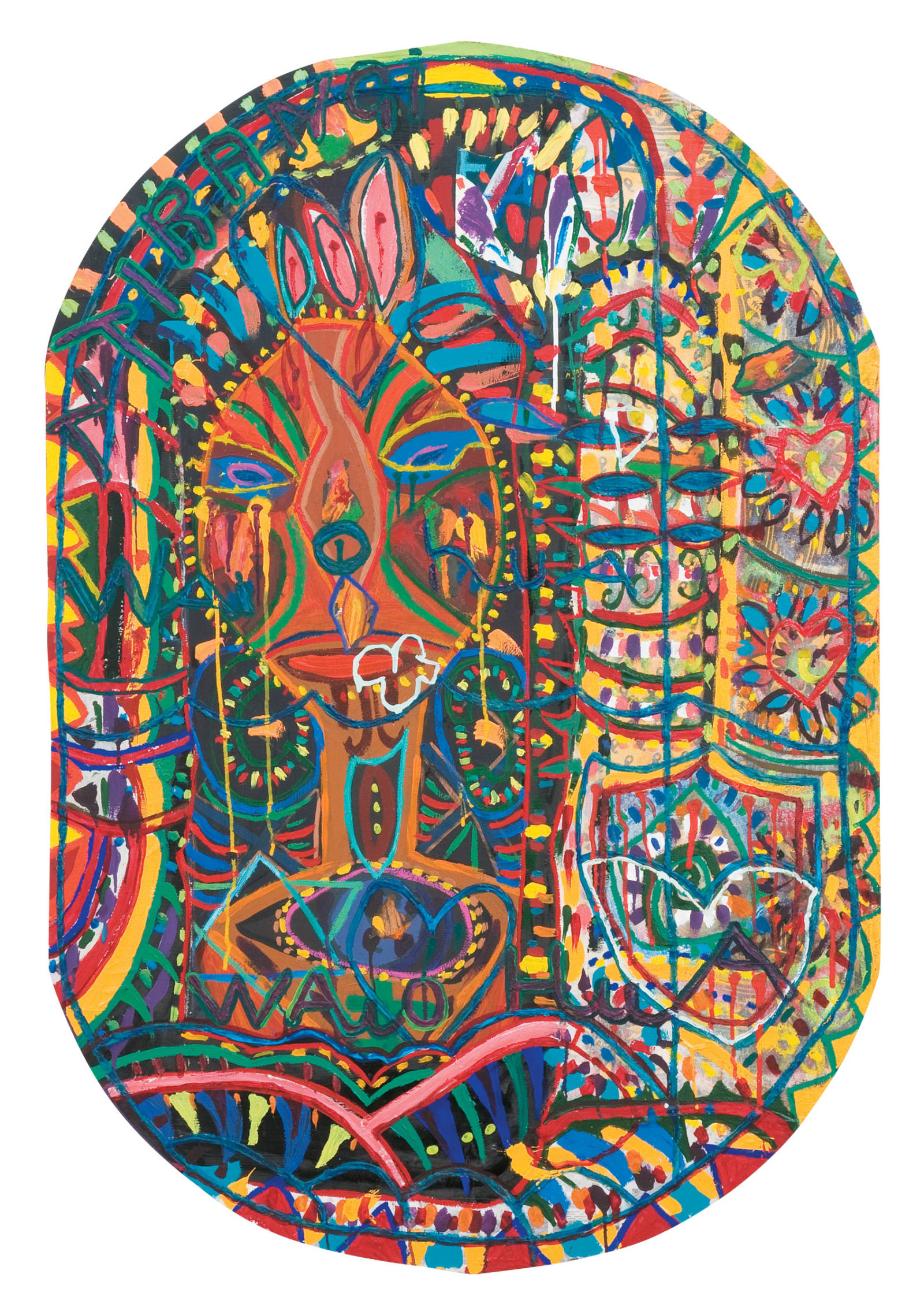KARAKA, Emily;
Kaitiakitanga: Shield I
1993
Mixed media on board
1225 x 810mm

The following two texts were written for Te Huringa/Turning Points and reflect the curatorial approach taken for that exhibition.
Peter Shaw
Emily Karaka has written, ‘As mana whenua we have a spiritual obligation to protect the land. This obligation transcends time and man-made laws. Our earth mother is in jeopardy and it is time that man is made accountable for the abuse and assault he has made on her.’
This shield and its partner, assembled without conventional artistic finesse in a variety of materials, are made to look ferocious. Their asymmetries and garish colours are a call to arms from an artist who is, as she herself says, always discussing issues that are economic, social, and environmental.
Inscribed with repeated references to her own Waiohua iwi, Karaka’s personal concerns, like those of Ralph Hotere, widen to include a whole world endangered by the environmentally detrimental effects of global warming, known yet still insufficiently heeded by those in positions of great responsibility.
Jo Diamond
A shield of any kind usually has at least two functions: obviously one for protection and another to assert warriorhood, if not political conviction. While it can be raised or lowered to deflect harm away from the body, it can also be brandished ceremoniously in demonstration of armoured power. The shield form is better known outside Aotearoa in the African continent, in Papua New Guinea, and at various times in European military history. Given Karaka’s well-known and valiant efforts to inject politics into her painting, this work should be interpreted as a political statement on local and global levels.
Karaka’s paintings continuously refer to Māori culture as deserving of recognition and protection, and in turn they unflinchingly criticise colonialist misdeeds of the past. While the shields that she has constructed have obvious references to Māori cultural history, including that of the Te Waiohua iwi of which she is part, they also resonate with references to other political struggles, particularly those of many indigenous peoples around the world who have similarly suffered the ‘downside’ of colonialism.
Karaka’s shields are both protective devices and emblems of the crusader for human rights, including those that directly affect Māori people. These are shields of Kaitiakitanga, a Māori language term that amounts to much more than mere ‘guardianship’ as it is usually translated. Kaitiakitanga is a multi-layered concept that can be applied within and beyond our shores. Karaka’s shields testify, as history so often does, to the fact that that change and redress must be fought for, in the hope of a better, brighter future.
Exhibition History
Te Huringa/Turning Points: Pākehā Colonisation and Māori Empowerment, Sarjeant Gallery Te Whare o Rehua, Whanganui, 8 April to 16 July 2006 (toured)
Provenance
1997–
Fletcher Trust Collection, purchased April 1997 (acquired with companion painting)
–1997
Unknown

